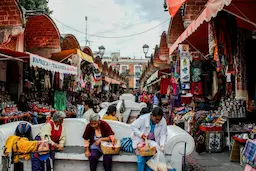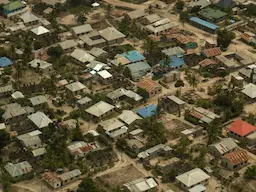Research Reports/Papers
Financial Inclusion is a global imperative, and many leading international and national bodies are working to research further. We have compiled a representative list of several key reports highlighting the global and regional stages of financial inclusion.
Global
The Global Findex Database 2021: Financial Inclusion, Digital Payments, and Resilience in the Age of COVID-19
Financial inclusion is a cornerstone of development, and since 2011, the Global Findex Database has been the definitive source of data on global access to financial services from payments to savings and borrowing. The 2021 edition, based on nationally representative surveys of over 125,000 adults in 123 economies during the COVID-19 pandemic, contains updated indicators on access to and use of formal and informal financial services and digital payments, and offers insights into the behaviors that enable financial resilience. The data also identify gaps in access to and usage of financial services by women and poor adults.
– World Bank
Financial Inclusion and Inclusive Growth: A Review of Recent Empirical Evidence
There is growing evidence that appropriate financial services have substantial benefits for consumers, especially women and poor adults. This paper provides an overview of financial inclusion around the world and reviews the recent empirical evidence on how the use of financial products—such as payments services, savings accounts, loans, and insurance— can contribute to inclusive growth and economic development. This paper also discusses some of the challenges to achieving greater financial inclusion and directions for future research.
– World Bank
Global FinTech Adoption Index 2019: As FinTech becomes the norm, you need to stand out from the crowd
Financial inclusion is a cornerstone of development, and since 2011, the Global Findex Database has been the definitive source of data on global access to financial services from payments to savings and borrowing. The 2021 edition, based on nationally representative surveys of over 125,000 adults in 123 economies during the COVID-19 pandemic, contains updated indicators on access to and use of formal and informal financial services and digital payments, and offers insights into the behaviors that enable financial resilience. The data also identify gaps in access to and usage of financial services by women and poor adults.
– EY
Fintech and Financial Inclusion: A Funders' Guide to Greater Impact
What will be the next big Fintech innovation in financial inclusion? Many donors and impact investors today are looking to support new innovations to maximize their development impact. But with fintechs emerging all the time — many touting their potential to improve the lives of low-income, excluded customers with unproven business models — it is important for funders to be wary of hype and conduct due diligence in making investments and designing development programs.
– CGAP
Redrawing the lines: FinTech’s growing influence on Financial Services
The insights in this report are based on the responses of over 1,300 senior Financial Services and FinTech executives from 71 different countries who participated in PwC’s Global FinTech Survey 2017. We complemented the study with our own insights and analysis into how FinTech and Financial Services are moving closer together and how Financial Services is innovating in response to FinTech. The report is also fueled by proprietary research from PwC’s DeNovo, focused on FinTech innovation and its impact on financial institutions.
– PwC
New Methodology Shows that 258 Million Children, Adolescents and Youth Are Out of School
Three years after the adoption of Sustainable Development Goal 4 (SDG 4) and the promise to provide universal primary and secondary education, there has been no progress in reducing the global number of out-of-school children, adolescents and youth. This fact sheet by the UNESCO Institute for Statistics (UIS) highlights the most recent statistics on trends at the global and regional levels, based on a revised calculation method that provides more precise estimates of the out-of-school population.
– UNESCO
North America
How America Banks: Household Use of Banking and Financial Services
How America Banks informs the FDIC’s mission of maintaining public confidence in the U.S. financial system. The findings presented in this report come from the FDIC Survey of Household Use of Banking and Financial Services. This survey has been conducted biennially since 2009 in partnership with the U.S. Census Bureau. The most recent survey was conducted in June 2019, collecting responses from almost 33,000 households
– FDIC
Financial Inclusion in the United States
A lack of financial inclusion has broader consequences for the macroeconomy, having the potential to hurt both equity and efficiency by reducing access to credit, which can be essential for entrepreneurship, homeownership, and economic development more broadly. Over the past several decades there have been substantial improvements in financial inclusion in the United States, narrowing somewhat the gaps in inclusion that exist along racial, regional, and income lines. More recently, a range of new technologies have emerged that have the promise to offer new, safer and more affordable financial services to a larger swath of the population.
– Council of Economic Advisors (Obama White House)
The FinHealth Spend Report 2021: What Financially Coping and Vulnerable Americans Pay for Everyday Financial Services
As the nation grapples with the ongoing economic impacts of the COVID-19 pandemic, families are managing as best they can – leveraging financial services to manage their day-to-day lives, harness opportunities, and rebound from shocks. But given that the majority of households in America were struggling financially even before the pandemic, it’s critical to understand how they are spending on financial services and whether those products are enabling them to thrive.
– Financial Health Network
The Puzzle of Financial Inclusion in Mexico: A Closeable Gap?
Financial inclusion is a fundamental pillar of development. Access to financial products and services broadens economic opportunities for individuals and firms and helps governments design and deliver transfers more effectively. For policymakers, increasing financial inclusion is a tool to accelerate growth, reduce inequality, and boost productivity for small and medium-sized enterprises.
– Center for Global Development
Mexico's National Policy for Financial Inclusion
In Mexico, financial inclusion is defined as the access and usage of formal financial services under a proper regulation that guarantees consumer protection schemes and promotes financial education, to improve the financial capabilities of all population segments. This definition emphasizes the multidimensional nature of financial inclusion, since it clearly indicates its four main components.
– National Council for Financial Inclusion
Financial Inclusion in Latin America and the Caribbean: Access, Usage and Quality
This study presents a general overview of financial inclusion in Latin America and the Caribbean. This study employs data for the three dimensions: access, use and quality, which outline a complete picture of the nature and characteristics of financial inclusion in the region. This information is essential for identifying weaknesses in financial market development and serves as a basis for elaborating effective inclusion strategies.
– Center for Latin American Monetary Studies
Fintech and Financial Inclusion in Latin America and the Caribbean
Despite some improvement since 2011, Latin America and the Caribbean continue to lag behind other regions in terms of financial inclusion. There is no clear evidence that fintech developments have supported greater financial inclusion in LAC, contrary to what has been observed elsewhere in the world. Case studies by national policy experts suggest that barriers to entry in the financial sector, along with a constraining regulatory environment, may have hindered a faster adoption of fintech. However, fintech development seems to have accelerated in the wake of the COVID-19 pandemic and with the support of recent policy initiatives.
– IMF
Determinants of Financial Well-Being: Evidence from Latin America
In recent years, the countries in Latin America and the Caribbean have registered notable achievements in macroeconomic stability and many have succeeded in capitalizing on the expansionary export cycles in pursuit of their own social development. Nevertheless, the region still faces significant challenges to achieve sustainable economic growth and to become comparable to the more developed nations. One challenge that stands out in particular is the persistence of low productivity.
– CAF (Development Bank of Latin America)
South America
Financial Inclusion in Latin America and the Caribbean: Access, Usage and Quality
This study presents a general overview of financial inclusion in Latin America and the Caribbean. This study employs data for the three dimensions: access, use and quality, which outline a complete picture of the nature and characteristics of financial inclusion in the region. This information is essential for identifying weaknesses in financial market development and serves as a basis for elaborating effective inclusion strategies.
– Center for Latin American Monetary Studies
Fintech and Financial Inclusion in Latin America and the Caribbean
Despite some improvement since 2011, Latin America and the Caribbean continue to lag behind other regions in terms of financial inclusion. There is no clear evidence that fintech developments have supported greater financial inclusion in LAC, contrary to what has been observed elsewhere in the world. Case studies by national policy experts suggest that barriers to entry in the financial sector, along with a constraining regulatory environment, may have hindered a faster adoption of fintech. However, fintech development seems to have accelerated in the wake of the COVID-19 pandemic and with the support of recent policy initiatives.
– IMF
Determinants of Financial Well-Being: Evidence from Latin America
In recent years, the countries in Latin America and the Caribbean have registered notable achievements in macroeconomic stability and many have succeeded in capitalizing on the expansionary export cycles in pursuit of their own social development. Nevertheless, the region still faces significant challenges to achieve sustainable economic growth and to become comparable to the more developed nations. One challenge that stands out in particular is the persistence of low productivity.
– CAF (Development Bank of Latin America)
Asia
Financial Inclusion Annual Report - Jan Dhan
The Government initiated the National Mission for Financial Inclusion (NMFI), namely, Pradhan Mantri Jan Dhan Yojana (PMJDY) in August, 2014 to provide universal banking services for every unbanked household, based on the guiding principles of banking the unbanked, securing the unsecured, funding the unfunded and serving unserved and underserved areas.
– India Department of Financial Services
Financial Inclusion in India – An Assessment
The Government of India and the Reserve Bank of India have been making concerted efforts to promote financial inclusion as one of the important national objectives of the country. Some of the major efforts made in the last five decades include – nationalization of banks, building up of robust branch network of scheduled commercial banks, co-operatives and regional rural banks, introduction of mandated priority sector lending targets, lead bank scheme, formation of self-help groups, permitting BCs/BFs to be appointed by banks to provide door step delivery of banking services, zero balance BSBD accounts, etc. The fundamental objective of all these initiatives is to reach the large sections of the hitherto financially excluded Indian population.
– Reserve Bank of India
India's National Strategy for Financial Inclusion
The National Strategy for Financial Inclusion 2019-2024 sets forth the vision and key objectives of the financial inclusion policies in India to help expand and sustain the financial inclusion process at the national level through a broad convergence of action involving all the stakeholders in the financial sector. The strategy aims to provide access to formal financial services in an affordable manner, broadening & deepening financial inclusion and promoting financial literacy & consumer protection.
– Reserve Bank of India
Financial Inclusion in Asia-Pacific
Asia has made significant progress in financial inclusion, but both its across-country and intra-country disparities are among the highest in the world. The gaps between the rich and the poor, rural and urban populations, and men and women remain deep. Income is the main determinant of the level of financial inclusion; but other factors, such as geography, financial sector structure, and policies, also play important roles. While some countries in the Asia-Pacific region are leaders in fintech, on average the region lags behind others in several important areas such as online (internet) purchases, electronic payments, mobile money, and mobile government transfers.
– IMF
Pradhan Mantri Jan-Dhan Yojana
The announcement of ‘Pradhan Mantri Jan Dhan Yojana’ by the Honorable Prime Minister of India has helped push the agenda on financial inclusion program in India. The efforts to include the financially excluded segments of the society in India are not new but the vision of reach and benefit convergence committed under PMJDY has been unparalleled. The drive has already featured in the Guinness Book of World Records, with over 12.5 crore accounts opened in the first 9 months of the scheme launch.
– resurgentindia
Central Bank Digital Currencies: A Potential Response to the Financial Inclusion Challenges of the Pacific
Many Pacific island countries are among the world’s most remote and geographically dispersed. As such, financial inclusion remains a major challenge, with many in the region still lacking access to financial services. This policy brief considers whether central bank digital currencies (CBDCs) can promote the accessibility of financial services across the Pacific islands and the design choices involved in their development.
– Asian Development Bank
Financial Inclusion: Europe and Central Asia Economic Update
With slowing global growth and increasing uncertainty clouding the global economic prospects, the Europe and Central Asia region faces a more challenging context than previously envisioned. Growth in the emerging markets and developing economies in the region slowed to 3.1 percent in 2018 and is projected to decline to 2.1 percent in 2019. What challenges does the region face in the coming year? What are some of the risks to the macroeconomic outlook? In the long run, how should policy makers design policies that boost growth and help individuals and firms adjust to the interplay between globalization and technological change? In the global context, this update summarizes the recent developments and outlook for the region. It also focuses on financial inclusion, as one of the important policy areas that can promote long-term growth, reduce poverty, and enhance resilience to shocks.
– World Bank
Africa
Financial Inclusion in Africa: An Overview
This paper summarizes financial inclusion across Africa. First, it provides a brief overview of the African financial sector landscape. Second, it uses the Global Financial Inclusion Indicators (Global Findex) database to characterize adults in Africa that use formal and informal financial services and identify the barriers to formal account ownership. Next, it uses World Bank Enterprise Survey data to examine how the use of financial services by small and medium enterprises in Africa compares with small and medium enterprises in other developing regions in terms of account ownership and availability of lines of credit. The authors find that less than a quarter of adults in Africa have an account with a formal financial institution and that many adults in Africa use informal methods to save and borrow. Similarly, the majority of small and medium enterprises in Africa are unbanked and access to finance is a major obstacle. Compared with other developing economies, high-growth small and medium enterprises in Africa are less likely to use formal financing, which suggests formal financial systems are not serving the needs of enterprises with growth opportunities.
– World Bank
Banking in sub-Saharan Africa: Recent Trends and Digital Financial Inclusion
In most sub-Saharan Africa (SSA) countries, following a prolonged spell of sustained growth, a sharp decline in commodity prices has combined with difficult domestic political and economic conditions. Only a few of the region’s non-resource exporters have been immune, continuing to expand at a robust pace, benefiting from low oil prices and enjoying healthy private consumption and investment growth rates. Overall, growth in SSA slumped to 3.4% in 2015 with a further slowdown to 1.4% projected by the IMF for 2016. The external environment, particularly for commodity exporters, remains challenging
– European Investment Bank
Financial Inclusion in Africa
Africa is at a turning point. Many countries have achieved high growth rates over the past decade, and many aspire to structural transformation, but the good performance has not translated into significant poverty reduction and shared prosperity. It has yet to provide low-income households and other vulnerable groups enough opportunity to improve their living standards. In terms of economic indicators, North Africa was performing well, but the young, low-income earners, and other vulnerable groups had been excluded from employment opportunities and other means of generating livelihoods to enable them to exit poverty. The civil unrest and social and political tensions of the so-called “Arab Spring” were a reality check to many countries in North Africa to be more inclusive. The challenge of inclusion is not new, but the social explosion in North Africa has been an eye-opener for policymakers everywhere, and for the development community as whole. A clear paradigm shift has resulted in a more inclusive and sustainable growth agenda. For its part, the African Development Bank (AfDB) has launched its Ten-Year Strategy 2013–22, the main thrust of which is inclusive and green growth.
– African Development Bank
Financial Development in Sub-Saharan Africa: Promoting Inclusive and Sustainable Growth
This paper provides a comprehensive review of financial development in sub-Saharan Africa and discusses how financial development can boost economic growth and make it more inclusive and less volatile. Building on a chapter in the April 2016 Regional Economic Outlook for sub-Saharan Africa, this paper provides an up-to-date panorama of various facets of financial development and how it has evolved over the past few decades. It draws on both country-specific and cross-country work undertaken in the African Department of the IMF, and also undertakes in-depth empirical analysis on issues such as the macroeconomic impact of financial development and its drivers. The analysis highlights how the region is performing compared with its peers—in areas where the region is doing particularly well such as the adoption of mobile banking technologies, as well as in areas where it is falling short. Finally, the paper also provides a detailed set of policy recommendations
– IMF
Study of the situation and perspectives for Microfinance sector
This MicroRate survey of Executives of financial institutions located in Africa aims to know their expectations for the coming year, in light of what happened in 2020 with the Covid-19 pandemic. Even though there are nuances by country regarding the impact of the crisis, the responses indicate that a prudent attitude is being maintained with regards to next twelve months. This prudence is not only based on the uncertainty about a variety of unknowns beyond the control of these entities, from what will be the performance of local economies until when the end of the pandemic will come. It also relies on the difficulties that several of them have faced in implementing and making effective measures designed to minimize the damage that the pandemic has caused them.
– MicroRate
Impact of the COVID-19 pandemic on micro, small, and medium enterprises (MSMEs)
This report provides a detailed country-level view of the impact of COVID-19 on micro, small, and medium enterprises (MSMEs), their coping strategies, and recommendations for policymakers and financial service providers to support them.
– MicroSave Consulting
Europe
Microfinance in Europe: Survey Report
The main purpose of the EMN-MFC Survey Report is to track changes in the industry and deepen the understanding of core issues such as scale, outreach, social and financial performance while also identifying common challenges for the years to come. This is the ninth edition of the report and for the third time it is jointly carried out by EMN and MFC, highlighting the complementarities and the added value of cooperation between the two European microfinance networks.
– European Microfinance Network
Impact of COVID-19 Pandemic on the Microfinance Sector in Europe: Field Analysis and Policy Recommendations
This paper summarizes the data collected by the Microfinance Centre (MFC) through a survey of microfinance institutions in Europe to assess the impact of COVID-19 crisis on the situation of microfinance institutions and their clients. The results show that while the pandemic touched all countries in the EU, the severity of its impact was markedly different, from very strong in some countries to almost negligible in others. However, all countries implemented some form of a lockdown which affected MFIs and their clients.
– Microfinance Centre
Financial Inclusion: Europe and Central Asia Economic Update
With slowing global growth and increasing uncertainty clouding the global economic prospects, the Europe and Central Asia region faces a more challenging context than previously envisioned. Growth in the emerging markets and developing economies in the region slowed to 3.1 percent in 2018 and is projected to decline to 2.1 percent in 2019. What challenges does the region face in the coming year? What are some of the risks to the macroeconomic outlook? In the long run, how should policy makers design policies that boost growth and help individuals and firms adjust to the interplay between globalization and technological change? In the global context, this update summarizes the recent developments and outlook for the region. It also focuses on financial inclusion, as one of the important policy areas that can promote long-term growth, reduce poverty, and enhance resilience to shocks.
– World Bank
Australia
Microfinance: Development as Freedom
Microfinance in Australia is growing in importance as a valuable developmental strategy. Hence, the application of developmental theory to the Australian microfinance arena is timely and adds to the understanding of the role and potential benefits of microfinance in helping to alleviate poverty. Development strategies are often thought of in the context of the developing nations but this paper will illustrate the value of development strategies in Australia in terms of creating paths towards increased levels of asset accumulation for all, and more importantly in providing greater levels of financial choice.
– Royal Melbourne Institute of Technology
































 Raj Mehta – Financial Education Instructor
Raj Mehta – Financial Education Instructor